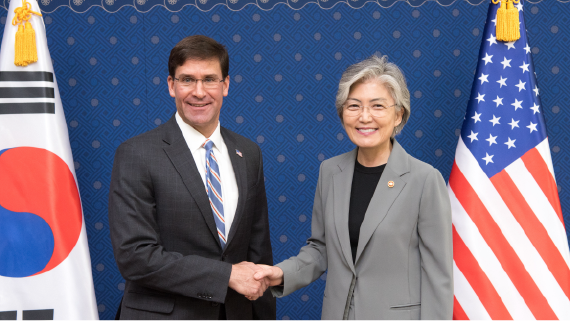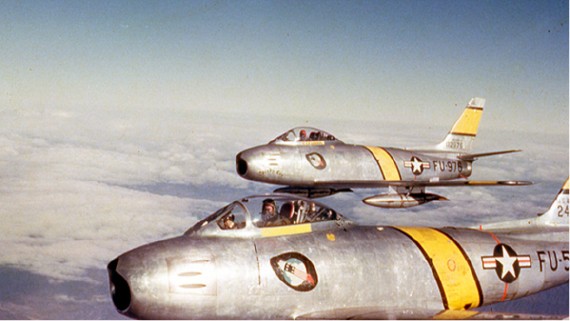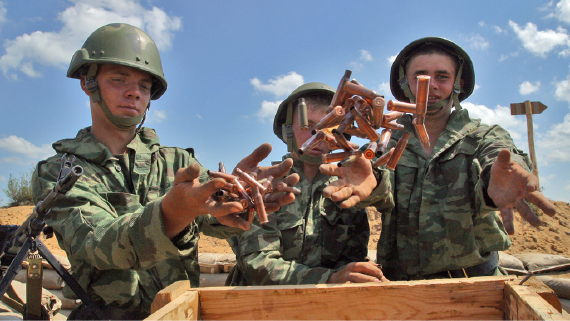The Military Incidents Project: Tracking Military Exercises
This is the third in a series of posts re-introducing Global Zero’s Military Incidents Project, begun in 2014 to track publicly-known military incidents between nuclear-armed states. Visit the project’s homepage for additional updates and information.
During a January 2 interview on MSNBC, U.S. Secretary of Defense Mark Esper suggested the U.S. and South Korea could restart joint exercises to show they were “ready to fight, if need be.”
This was the latest installment in the recent history of the exercises, known since 2009 as Key Resolve/Foal Eagle, which have assumed an outsized role in U.S.-North Korea diplomacy. The first iteration of Foal Eagle took place in 1997; in 2018, after the Singapore summit, President Trump announced the U.S. was suspending the exercises. But this never actually happened: they have since been replaced by smaller-scale exercises between the two countries.

Military exercises are ostensibly an opportunity for militaries to test equipment, develop or test a strategy, or better understand a combat scenario. But the recent history of U.S.-North Korea diplomacy hints at their many other uses: as a show of force to intimidate an adversary or reassure an ally; as a bargaining chip in a diplomatic exchange; or as a way to assert influence over a geographical area outside a country’s borders.
Much attention has been given to their political role in recent years, as the number, frequency, and size of these exercises has increased, particularly near politically important borders. In an era when militaries are increasingly tasked with accomplishing tasks once left to diplomats, military exercises have assumed a much more central role in the way nuclear-armed states manage their relations with one another.
This means that we can use trends in how, where, and when military exercises are conducted to understand the deterioration of relations among nuclear-armed states. This manifests in two key ways. First, in recent years, governments that have poured resources into upgrading and expanding their forces, equipment, and operations have also conducted more exercises to test these capabilities.

But the decision to conduct more and larger exercises itself must be considered separately from the need to test new capabilities. Depending on the location, timing, and other factors — most importantly communication in accordance with established guidelines with other governments about the exercises — an exercise can come across either as business as usual or a provocative move with escalatory potential.
Diplomatic processes to facilitate communication about military exercises and other military activities have also deteriorated in recent years. The Vienna Document and the Global Exchange of Military Information, both overseen by the Organization for Security and Co-operation in Europe, have provided a framework for these processes over the past three decades, particularly in Europe. Both agreements lay out minimal conditions under which a signatory must report a military exercise or other military operation.
Worsening relations between Russia and NATO countries have manifested in an increase in military exercises that has gone hand-in-hand with a decline in reporting practices. Russia, for example, has avoided the mandatory reporting threshold for large-scale exercises by conducting military exercises in stages, with each individual stage under the threshold, presenting a challenge both to the documents as a regulatory tool and for tracking the exercises themselves.

Second, military exercises are less visible than interactions among leaders, and therefore less likely to be used to present an image to the public through the press and public relations efforts. Nevertheless, military exercises are also sometimes used to shape a public narrative about the role of the military, the threats facing a country, and the supposed necessity of nuclear weapons. Understanding their many roles–as part of the day-to-day operations of militaries worldwide, as diplomatic tools, and as part of an effort to shape public opinion–is essential to understanding relations among nuclear-armed states.
The next post in this series will discuss tests of new weapons and delivery systems. To stay up-to-date with all project updates, visit the Military Incidents Project homepage.
Photo #1: U.S. Secretary of Defense Dr. Mark T. Esper meets with Korean Minister of Foreign Affairs Kang Kyung-wha in Seoul, Republic of Korea by Amber I. Smith licensed under CC BY 2.0.
Photo #3: Union Shield 2006 military exercise by Ivan Rudnev licensed under CC BY-SA 3.0.